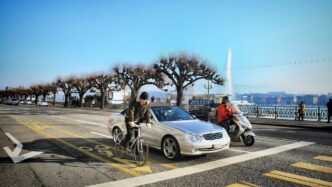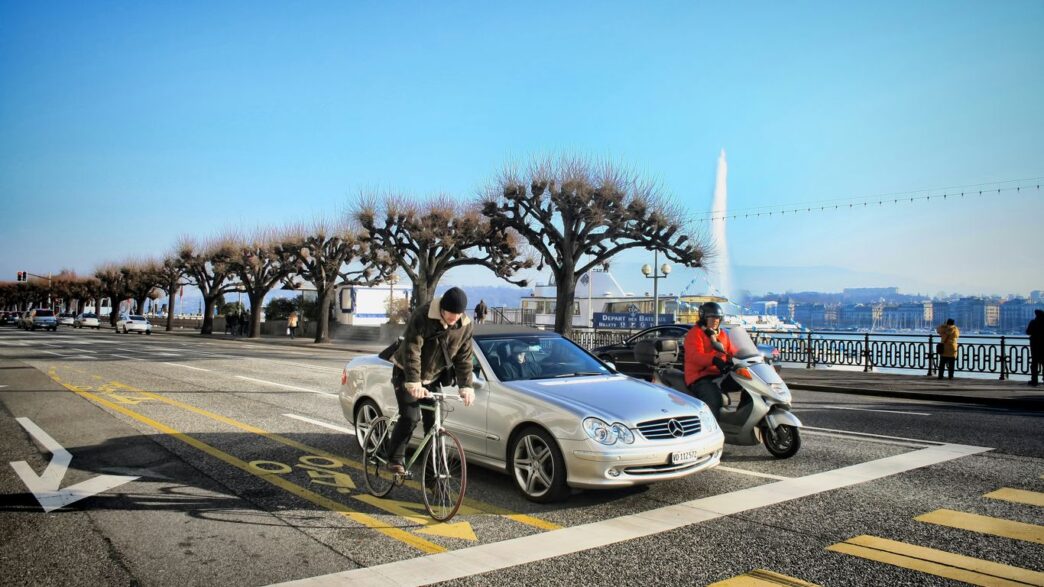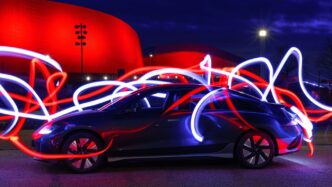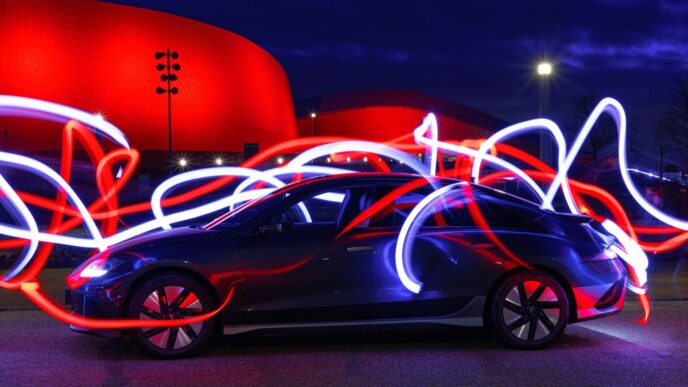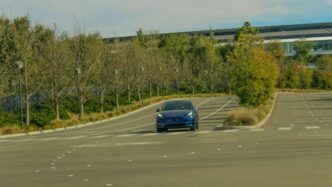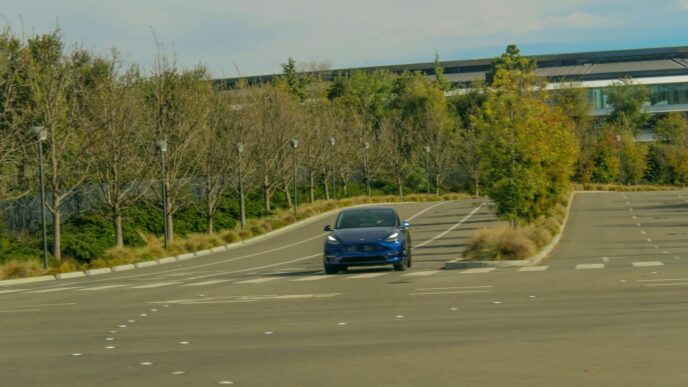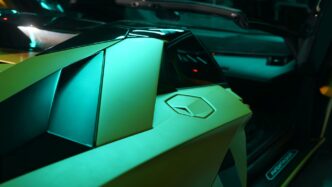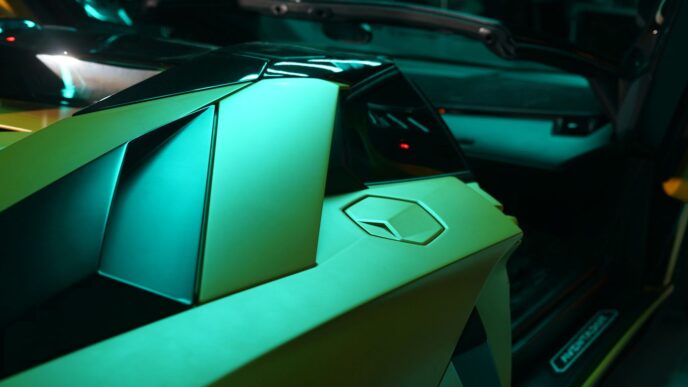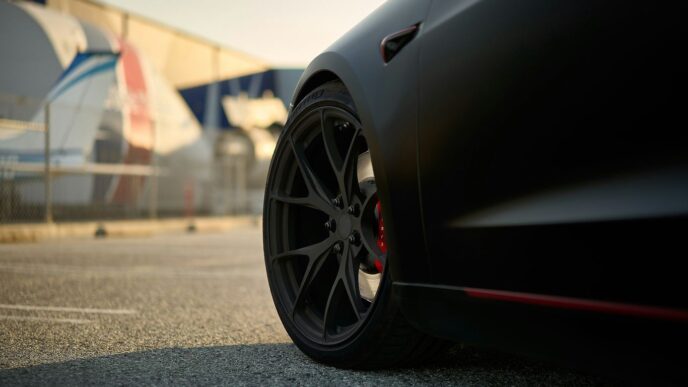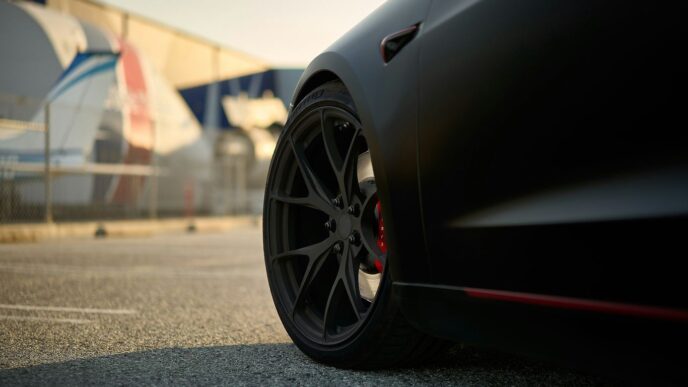The Nissan Leaf has been around for a while, but the 2025 version is shaping up to be a big leap forward. For years, the Leaf was the go-to electric car for folks who wanted something reliable and affordable. Now, with more options and better features, Nissan is trying to put the Leaf right back at the front of the pack. This next generation promises more range, smarter tech, and a design that fits families just as well as commuters. Let’s take a closer look at what’s coming for the Nissan Leaf in 2025.
Key Takeaways
- The 2025 Nissan Leaf offers two battery choices, giving drivers up to 375 miles of range depending on the version.
- Charging is much quicker now, with the big battery model able to go from 10% to 80% in about half an hour using a fast charger.
- The new design is more aerodynamic and roomy inside, making it a better fit for families and daily drivers alike.
- Nissan has added more tech features, like improved infotainment, in-car Wi-Fi, and easier-to-use controls.
- Compared to rivals like Tesla and Kia, the Leaf stands out for its efficiency, value, and reliability, plus it’s still made in the UK with local battery sourcing.
Redefining the Nissan Leaf for the New Era

Evolution from the World’s First Affordable EV
When the first Nissan Leaf showed up back in 2010, it blew open the doors for ordinary folks to actually own an electric car. Back then, nobody else was making a real, budget-friendly EV you could drive every day. Over the next fifteen years, Nissan shipped out over 700,000 of them worldwide. They nailed the basics: simplicity, quiet reliability, and a reputation that stuck around even when rivals caught up. But let’s be honest—after its early glory days, the Leaf sort of got left behind as the competition cranked out newer, flashier models.
Now, the 2025 Leaf is a total reset, not just a revision. Gone are the old limitations: this generation finally matches what folks expect today from a main family car—good range, proper charging speeds, and tech that doesn’t feel a decade old.
Positioning Against Modern Competition
The game has changed out there. You have crossovers and hatchbacks everywhere: Tesla, Kia, Volkswagen, you name it. They’re not just electric—they’re versatile, loaded with features, and (a sore spot) some are priced aggressively. The Leaf can’t just rest on being the original anymore; it has to bring its A-game.
Here’s how the 2025 Leaf compares to some direct competitors:
| Model | Range (WLTP est.) | Battery Options | Fast Charging |
|---|---|---|---|
| Nissan Leaf 2025 | Up to 375 miles | 52kWh / 75kWh | 150kW (DC) |
| Tesla Model 3 | Up to 390 miles | 57.5kWh / 75kWh approx | 250kW (DC) |
| Kia EV4 | Up to 345 miles | 58kWh / 77.4kWh | 350kW (DC) |
| VW ID.3 | Up to 340 miles | 58kWh / 77kWh | 120kW (DC) |
Big takeaway? Nissan is finally back in the ballpark—no more awkward gaps in range and power, and charging speeds that don’t leave you stranded at a roadside charger half the afternoon.
A Broader Appeal as a Family Car
What’s probably most striking about the latest Leaf is just how clearly it’s been rebuilt to suit real-world life—not just as a second city runabout, but as an actual family car. Here’s what stands out:
- It feels bigger inside, thanks to increased height and a flatter floor, but it’s actually a bit shorter on the outside—easier for city parking.
- The backseat is much roomier, making it actually comfortable for three.
- Trunk space is more usable for groceries, strollers, or weekend camping trips (even if they claim it’s shorter, you’ll find it boxier and more practical).
- The electronics, like the driver controls and infotainment, are way less confusing—a win for parents who don’t want to spend five minutes just turning down the stereo.
Bottom line: the Leaf isn’t just back—it’s been reimagined as a smart, functional choice for regular families who want an EV without giving up on practicality or comfort.
Improved Battery Technology and Range for 2025
Advanced Battery Options: 52kWh and 75kWh
For 2025, Nissan’s approach is simple: offer two distinct battery choices and make range a real strong suit. The Leaf now comes with a 52kWh pack that can handle typical daily use, and a larger 75kWh battery for serious mileage.
Here’s how they compare side by side:
| Battery Size | Estimated Range (WLTP) |
|---|---|
| 52kWh | 275 miles |
| 75kWh | 375 miles |
If you’re mostly commuting or doing city errands, you’ll be fine on the lower end. If your weekends are all about road trips, that bigger pack means no more stressing about charging stops. Having a 75 kWh option really puts the Leaf in a better spot for long journeys, rivaling many pricier EVs on the market (LEAF S+ model details).
Real-World Range and Efficiency Enhancements
What stands out with this new-gen Leaf is that it gets so much out of its battery, even compared to bigger EVs. Nissan did a few smart things:
- Lowered the drag coefficient to 0.25, so the car faces less wind resistance.
- Swapped to low-rolling-resistance tires, making the most of each charge.
- Tweaked the system so the Leaf does well at constant highway speeds too—about 267 miles at 70mph, which is rare for an affordable EV.
WLTP numbers are solid, but you’ll get the best results driving with a light foot, in good weather, and without loading the trunk to the top—no huge surprises there.
Faster Charging Capabilities
The jump in charging speed is a huge deal if fast turnarounds are important to you. The old model struggled here, but now:
- The 75kWh Leaf with a 150 kW DC charger can recharge from 10% to 80% in about 30 minutes.
- Home charging with an 11 kW AC unit keeps overnight top-ups easy and cheap.
- Battery heating systems keep things efficient even when it gets cold—helping speed up winter charges.
Let’s sum up the fast-charging side:
- 75kWh battery: around 30 minutes for 10–80% on a quick charger.
- Older Leaf: over an hour for the same.
- Faster home rates mean you won’t need to visit public chargers as much.
Add it all up, and the 2025 Nissan Leaf is not just more flexible, it’s practical for a wider range of folks—families, commuters, even the odd road tripper. Nissan clearly listened to what real drivers wanted.
Design Innovations Inside and Out
The 2025 Nissan Leaf isn’t just a refresh—it’s a big shift from what we’re used to seeing. Nissan aimed for style as well as everyday practicality, doing a lot more than just rounding off the edges or tweaking the headlamps.
Aerodynamic Exterior and Japanese Motifs
Nissan’s given the Leaf a shape that’s smoother than ever, slicing through the air more efficiently. The biggest changes show up in the details:
- Subtle lines and curves help the Leaf slip through the wind, which means less drag and better range.
- Japanese culture shines through with new trim details, and you’ll spot traditional numerals worked into the rear light signatures and charge port—little touches for anyone who loves Easter eggs.
- The Leaf debuts 3D holographic tail lamps, making the back of the car pop every time you walk up to it. They’re not just flashy; they’re part of what gives the new model added depth and character.
It’s not trying to look like every other electric crossover, and that’s refreshing.
Enhanced Interior Comfort and Materials
Inside, Nissan’s stepping up the game. The seat fabric feels a touch thicker and more substantial, and the switchgear finally has a solid feel to it:
- Softer surfaces on armrests and dashboard sections, which is great on a long drive.
- Quieter cabin than previous models thanks to better sound dampening and redesigned door seals.
- New ambient lighting that makes late-night driving more pleasant—nothing over the top, just subtle enough that you notice when it’s missing in other cars.
There’s way less plastic sheen than in the last few generations. It makes it much easier to just sit back and enjoy the drive, especially if you spend a lot of hours in your car every week.
Roomier Cabin and Usability Upgrades
Room isn’t just about a wider back seat—it’s about how you use the space. Nissan has thought through some annoyances that owners have pointed out for years.
- More legroom up front and redesigned rear seats mean it’s not just for city commutes anymore.
- Extra storage bins in useful places (like under the front armrest and inside the doors).
- Broader cargo area with a flatter load bay, letting you fit in larger suitcases or even small furniture.
Here’s a quick look at how space compares with the previous generation:
| Area | 2023 Leaf | 2025 Leaf |
|---|---|---|
| Front Legroom | 42.1 in | 43.2 in |
| Rear Legroom | 33.5 in | 35.1 in |
| Cargo Volume | 23.6 cu ft | 25.0 cu ft |
So, from the first glance outside to how you actually use the cabin, the 2025 Leaf makes a real effort to fix some old pain points. The result? A car that feels more welcoming every single day.
Driving Experience and Performance Tweaks
The 2025 Nissan Leaf doesn’t try to win a drag race with flashy numbers, and that works in its favor. Instead, Nissan puts the spotlight on steady, stress-free driving and comfort you can feel every day. Let’s break down what that actually means for drivers shopping for an affordable EV that can do a bit of everything.
Balanced Power and Everyday Usability
The Leaf comes in two versions this year: a 52 kWh and a 75 kWh model. Here’s a quick look at the performance specs:
| Version | 0-62 mph (seconds) | Front-Wheel Drive | Max Power (kW) |
|---|---|---|---|
| 52 kWh Battery | 8.4 | Yes | 110 |
| 75 kWh Battery | 7.6 | Yes | 150 |
- The power is modest on paper but strong enough to make passing and highway entry easy.
- Front-wheel drive means handling is predictable in daily traffic and on rainy roads.
- Wheelspin is rarely an issue because of the careful power delivery from the motor.
Handling, Comfort, and Safety Features
Driving the latest Leaf feels familiar and secure—think of it as the “easy button” for EVs. Nissan did a fair bit of reworking in this area:
- The suspension now feels smoother at all speeds, finding a good compromise between soaking up potholes and keeping body roll in check on quick turns.
- At highway speeds, the car doesn’t float or bounce much, so it feels at home during longer trips.
- Braking is calm and predictable, with good pedal feel.
- Traction and stability systems are always on guard, but never intrusive.
Safety is still center stage, so you get:
- Lane keeping and emergency braking as standard.
- Enhanced airbag coverage, including side curtain units.
- Automatic post-collision braking for added peace of mind in sudden stops.
Advanced Driver Assistance and Customization
This year, ProPILOT Assist and other driver aids have gotten smarter and easier to tweak, so you can tailor the ride to what you like.
- ProPILOT Assist keeps the Leaf dead center in the lane with less steering input needed from the driver.
- Adaptive cruise smoothly matches the speed of traffic—no weird jolts or sharp slow-downs.
- Customizable drive modes let you pick between max efficiency, normal, or a perkier throttle response for city fun.
- Regenerative braking can be set to be more aggressive or more subtle, depending on how much single-pedal driving you want to do.
If you’re moving into an EV for the first time, the 2025 Leaf isn’t intimidating—it just fits into your routine. Driving one feels more like hopping into any modern compact car, but with less noise and, for a lot of folks, less stress.
Technology and Connectivity in the Nissan Leaf

Tech keeps moving fast, and Nissan’s not about to fall behind with the 2025 Leaf. The new model takes a couple of big steps forward when it comes to gadgets, convenience, and keeping everything up to date—something a lot of folks have been asking for. Here’s what stands out in the world of Leaf tech this year.
Upgraded Infotainment and NissanConnect Services
Nissan has freshened up the infotainment system with a larger, sharper touchscreen and better smartphone support. There’s wireless Android Auto and Apple CarPlay, which is a relief if you’re tired of messing with cords. The new system feels quicker, and getting to your maps, podcasts, or calls is less of a chore than before. NissanConnect Services keeps your car linked to your phone, so you can check its status, set the climate remotely, or schedule charging easily—all from the app.
Key features include:
- Voice control for navigation, calls, and audio
- Real-time traffic info and route updates
- Remote vehicle management through your phone
In-Car Wi-Fi and Over-the-Air Updates
Internet on the road is basically expected these days. For 2025, Nissan offers in-car Wi-Fi through a subscription—you pay extra, but then everyone onboard can stream or work while traveling. The car connects via a built-in data SIM (from Orange), and plans suit lighter or heavier use.
| Wi-Fi Option | Data Provider | Subscription Required | Device Support |
|---|---|---|---|
| In-Car Wi-Fi | Orange | Yes | Up to 8 |
Over-the-air (OTA) updates take away a big headache, too. Instead of visiting a dealer for the latest software or maps, updates just happen—often quietly overnight—so your tech doesn’t go out of date. Nissan says these will be free for at least five years from the car’s warranty start.
Intuitive Controls and User Interface Improvements
Many drivers complained past Leaf models were clunky when it came to controls, but that’s changed. The 2025 version uses a mix of physical buttons (for climate and volume) and a reworked touchscreen for the rest. Shortcuts actually work now, and menus are more direct.
Three big improvements:
- Customizable home screen you can tweak for your most-used tools
- Larger, clearer fonts and icons help if you’re driving and just need to glance
- Faster response—there’s less lag, so you can tap between screens far more smoothly
The net result? Most owners won’t need to keep a manual in the glovebox. The car’s tech aims to be friendly, and for the most part, it hits the right notes. As far as the affordable EV market goes, it’s a very strong showing that should keep new buyers and loyal fans happy.
How the Nissan Leaf Stacks Up Against Rivals
Electric cars are everywhere now, but the Nissan Leaf still draws a crowd—and a lot of questions about how it compares to options like the Tesla Model 3, VW ID.3, and new compact EVs from Kia and Peugeot. This year, Nissan says the Leaf is ready to go head-to-head again. Here’s how it actually measures up in real-world buying decisions.
Comparisons with Tesla, Kia, and Volkswagen
Tesla made a name for itself with flashy tech and longer range, Volkswagen pitches the ID.3 at practical buyers, and Kia’s latest EVs are looking sharper than ever. Folks considering the new Leaf want to know: does Nissan finally belong in this conversation again?
- Range: The Leaf’s new battery options—52kWh and 75kWh—post 270 to 375 miles WLTP on paper. That’s not just decent; it can rival or beat a number of similarly priced competitors.
- Charging: 150kW DC charging means the big-battery Leaf gets from 10% to 80% in about 30 minutes. It’s not Tesla Supercharger speed, but it’s right in line with most other options now on sale.
- Driving and comfort: The Leaf’s FWD setup, smooth ride, and well-balanced suspension make it less hectic in daily use than a Model 3, and its cabin is noticeably quieter than some early-gen EVs or smaller Kia siblings.
Here’s a quick look at some numbers:
| Model | Battery | WLTP Range (miles) | 0-62 mph (sec) | Max DC Charging |
|---|---|---|---|---|
| Nissan Leaf 2025 | 75kWh | 375 | 7.6 | 150kW |
| Tesla Model 3 | 60-75kWh | 305-374 | 6.1 | 170kW |
| VW ID.3 | 58-77kWh | 267-350 | 7.3 | 135kW |
| Kia EV3 | 58-77kWh | 255-350 | 6.7 | 170kW |
The Leaf is no longer the slow kid in class—it can match, and sometimes pass, key rivals in practical specs. It’s not aiming for sports-car numbers, but families and commuters probably won’t care.
Efficiency and Practical Range Advantages
Nissan edges ahead on how far the Leaf can go on each kWh. The car’s new aerodynamics, lower rolling resistance tires, and lighter weight mean less energy gets wasted compared to some chunkier crossovers and SUVs. Real-world range figures, especially at highway speeds (close to 270 miles at a steady 70 mph), are impressive for this price point.
Some practical wins for the new Leaf:
- Goes farther on a charge than most affordable EVs its size.
- Charges faster than older Leafs and many budget models.
- Energetic but still easy-going in city traffic—no burnout or heavy steering.
You’ll spot the difference most on long trips or when charging is limited, since you squeeze more miles from each stop.
Value for Money in the Electric Compact Segment
What do you actually get for your money? The answer depends on your priorities. The Leaf makes its case with a roomy cabin, intuitive controls, lots of standard active safety features, and the sort of straightforward, easy-to-use tech that you don’t need a manual for. Nissan’s reputation for reliability doesn’t hurt, either.
Here’s what helps the Leaf stand out for budget-conscious buyers:
- Competitive pricing for both battery sizes
- Generous warranty and battery guarantees
- Frequent deals and finance offers for early adopters
Final verdict: If you’re after a no-nonsense, efficient, and user-friendly EV, the new Leaf finally deserves a spot back at the top of your shortlist. Others may wow you with their screens or acceleration, but the Nissan Leaf 2025 brings a lot to the table for folks who just want a great electric runabout without the drama.
Sustainability and Manufacturing Insights
UK Production and Battery Sourcing
The 2025 Nissan Leaf is sticking pretty closely to its British roots. Production takes place at the Sunderland plant in the UK, which has become something of a hub for Nissan’s EV push. They’re aiming to use as many local components as possible—especially when it comes to the batteries. By sourcing the batteries closer to home, Nissan slashes not only costs but also cuts shipping emissions. That matters a lot when you’re selling an eco-car. There are a few key things going on here:
- Most batteries are now sourced from European suppliers, which dramatically shortens the supply chain.
- The Sunderland plant uses renewable energy (wind, mostly) for a chunk of its power.
- Nissan is setting up recycling programs for old Leaf batteries, trying to give them a second life in stationary storage projects.
Environmental Benefits and Impact
Driving a Leaf isn’t just about skipping the pump—it’s about lowering your yearly carbon footprint, sometimes by a shocking margin. Here’s a quick breakdown:
| Factor | Conventional Car | Nissan Leaf (2025) |
|---|---|---|
| CO₂ Emissions (tons/year) | 4.5 | 0.8 |
| Local Pollutants (NOx, PM) | High | Negligible |
| Average Annual Maintenance | $900 | $350 |
- The reduction in tailpipe emissions is the headline, but the lack of engine oil changes and fewer exchanged parts also mean less industrial waste.
- Nissan says a Leaf can cut overall lifecycle emissions by more than 60% compared to a gas hatchback, factoring in both production and use.
- Recycled interior materials and eco-paints, used in higher percentages this year, further shrink its environmental footprint.
Longevity and Battery Health Guarantees
Nissan’s taking pains to make sure new Leaf owners feel good about their battery, because range anxiety is still real for a lot of people. Now there’s an 8-year/100,000-mile battery warranty, up from 5 years in earlier models. Other steps Nissan’s taking include:
- Regular battery health checks at dealerships, and a clear battery status report provided annually.
- Software to monitor and optimize charging habits, helping the battery retain more capacity over time.
- Options for battery refurbishment rather than just replacement, keeping costs lower and waste to a minimum.
For anyone worried about long-term value, Nissan is clearly trying to shift the story from "cheap electric runabout" to "futureproof family car."
Conclusion
So, that’s the new Nissan Leaf for 2025. It’s wild to think how far this car has come since the early days when it was basically the only electric car most people had even heard of. Now, the Leaf is back with a lot more range, faster charging, and a design that feels way more modern. It’s not the flashiest EV out there, but it does the basics really well—good space, easy to drive, and still has that reputation for being reliable. Sure, there are a bunch of other electric cars to pick from now, but the Leaf still makes a strong case for itself, especially if you’re looking for something practical and not too expensive. If Nissan can keep the price reasonable, this new Leaf could be a real hit for families and anyone just wanting a solid electric car without all the fuss.
Frequently Asked Questions
What is the range of the 2025 Nissan Leaf?
The 2025 Nissan Leaf comes with two battery options. The 52kWh battery can go about 270 miles, while the bigger 75kWh battery can reach up to 375 miles on a single charge. These numbers are based on standard tests, but real driving might give you a bit less depending on things like weather and how you drive.
How fast can the new Nissan Leaf charge?
The new Leaf can use fast chargers up to 150kW. With the big battery, you can charge from 10% to 80% in about 30 minutes. This is a lot quicker than older Leafs, which took over an hour for the same amount.
Is the 2025 Nissan Leaf good for families?
Yes, the new Leaf is built to be more practical for families. It has a roomier cabin, a flat floor in the back for more leg space, and better seats. The car is also a bit taller, so there’s more headroom for everyone.
What makes the 2025 Nissan Leaf different from its rivals?
The Leaf stands out because it’s very efficient and uses smaller batteries to go far. It’s also known for being reliable and easy to drive. While cars like the Tesla Model 3 or Kia EV3 offer strong competition, the Leaf is still a great value for people looking for an affordable electric car.
Where is the 2025 Nissan Leaf made?
The new Leaf is made in Sunderland, UK. The batteries are also made nearby, which helps lower the car’s carbon footprint and supports local jobs.
How long is the battery warranty for the 2025 Nissan Leaf?
Nissan offers a warranty on the Leaf’s battery for 8 years or 100,000 miles, whichever comes first. This covers big drops in battery capacity, giving you peace of mind about the car’s long-term use.

